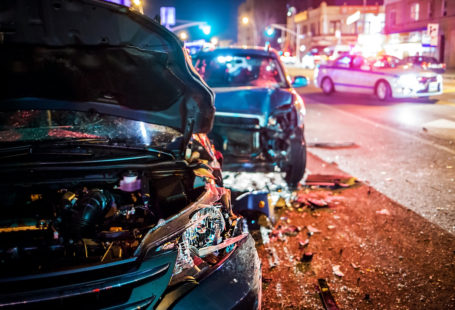If the death of a loved one was the result of someone else’s negligence, you may be able to pursue a wrongful death claim against the negligent party. Sherwin Arzani, a personal injury attorney at Citywide Law Group, discusses your options and how you can seek compensation.
California’s Wrongful Death Statute
CCP 337 controls these actions, and the damages available are a little different than the ones in injury-based negligence claims. Since the decedents were the victims, wrongful death plaintiffs can typically only recover economic losses. However, this phrase is very broadly defined to include:
- Decedent’s Final Expenses: These costs usually include funeral expenses, burial expenses, and other associated costs.
- Decedent’s Medical Bills: Some victims remain alive for months or even years after a serious illness diagnoses or trauma injury, and all associated medical bills are compensable.
- Decedent’s Lost Income: Most attorneys partner with financial professionals to accurately estimate a decedent’s future lost income.
- Loss of Consortium: This is a legal terms which basically includes companionship, guidance to minor children, and household services; in California wrongful death cases, loss of consortium also includes loss of financial support.
In terms of damages, no amount of money in the world can make up for the untimely death of a loved one, but wrongful death actions at least help bring a sense of closure and provide some measure of financial security for survivors. Procedurally, a surviving spouse, child, or person “who would be entitled to the property of the decedent by intestate succession” can file a wrongful death action.
Poisoning
A few years ago, unintentional poisoning overtook motor vehicle crashes and became the leading cause of injury-related death in the United States. Many of these incidents are attributable to:
- Failure to Warn, Consumer Goods: Many household cleaners, insecticides, and disinfectants contain very dangerous chemicals, and a generic “keep out of reach of children” may or may not be sufficient warning.
- Medical Negligence: Now that most patient records are available via a secure online portal, doctors essentially have no excuse for prescribing medicine that may have harmful or fatal effects if it is used in combination with another drug.
- Failure to Warn, Prescription Medication: Over the last ten years, the cost to bring a new drug to market has more than doubled to an estimated $2.6 billion. To recoup these staggering costs as quickly as possible, some drug makers do not warn consumers about all potential side-effects. A similar issue comes up when a new study comes out and the drug maker changes the label but does nothing to warn patients who have already ingested the medicine.
A large number of poisoning deaths also occur in swimming pools. If there are not enough cleaning chemicals in the water, dangerous and deadly bacteria quickly grows and spreads; conversely, if the chemicals are too strong, they often cause severe allergic reactions and/or chemical burns.
Motor Vehicle Crashes
Car wrecks, truck wrecks, and bus wrecks are the second leading cause of injury-related death in the United States. Most drivers have a duty of care to drive defensively and avoid car crashes. Drivers breach the duty of care in various ways, including:
- Impairment: Alcohol, drugs, and fatigue all have similar effects on motor skills and judgement ability. Many times, there is a lethal combination; for example, tortfeasors (negligent drivers) could stay out late and have a drink or two, and although they are not legally intoxicated, they are far too impaired to be driving.
- Distraction: Anything that leads drivers to take at least one hand off the wheel, take their minds off driving, or take their eyes off the road is distracted driving. Hand-held cell phones combine all three types of distraction (manual, cognitive, and visual); hands-free cell phones are not any better, because they still involve two of the three areas and give drivers false senses of security.
- Speed: Speeding drivers have less time to react to emergencies, are less able to control their vehicles, and crash into other objects or people with greater force.
Comparative negligence, which is a way to shift part of the blame to the victim, is one of the most common insurance company defense in car crash cases.
To complicates matter more, California and other states may soon see self-driving cars and trucks on the road. Find out more about liability in accidents involving self-driving trucks.
Workplace Injuries/Premises Liability
Fall-related incidents are the third leading cause of injury-related death in the United States; they are particularly common on the job. In fact, the Occupational Safety and Health Administration says that eliminating the “fatal four” can cut the number of such deaths can be cut in half:
- Falls,
- Electrocutions,
- Struck by, and
- Caught between.
In California, injured workers are typically eligible for no-fault insurance benefits that cover their economic losses.





